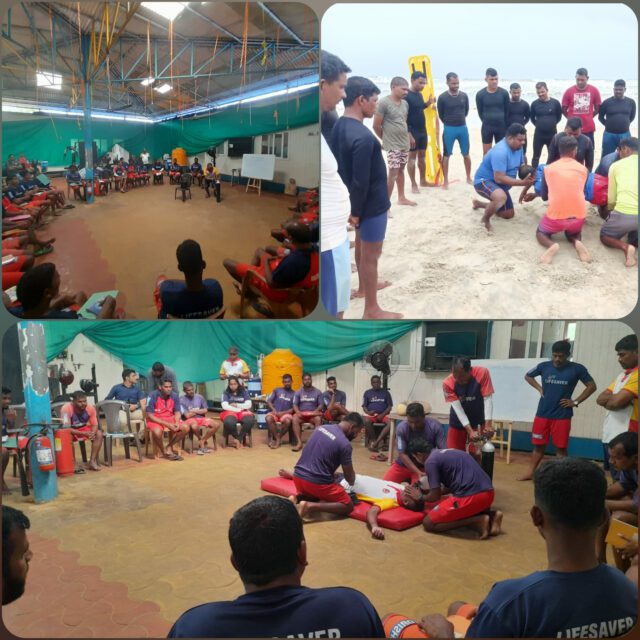PANAJI: Drishti Marine, Goa’s lifesaving force of 400 lifesavers, completed the annual intensive refresher training programme conducted over the course of two months with sessions being held in North and South Goa. The training programme held over two weeks – included emergency lifesaving responses, rigorous physical drills, soft communication skills and effective mechanisms to avoid conflict with visitors to the beach especially tourists, states a press release.
Explained Navin Awasthi, Operations Head, Drishti Marine, “Every year the entire lifesaving force go through a refresher programme to ensure they are up to date. The skills needed to be an efficient lifeguard includes knowledge of CPR and first aid, beach operations, jet ski operation, use of rescue tube, board and various rescue techniques in addition to leadership and soft skills. Most importantly the candidates need to be physically fit and be able to swim 400 metres in under 11 minutes.
“The emphasis is placed on First-aid and CPR since the victim has a short window of three to four minutes between surviving and being declared clinically dead. Those first few minutes of a person’s life are critical. That is why we concentrate on emergency response services.”
The sessions included in-depth classes and live demonstrations in Cardiopulmonary Resuscitation (CPR), Automated External Defibrillator (AED), and handling of oxygen cylinders. Navin added, “The lifeguard is the first emergency responder on the beach. Every tower is equipped with an AED, CPR, and an O2 cylinder, which provides immediate first aid to the victim until 108 ambulance services arrive.”
The lifesavers were taken through drills to better equip the lifesavers to operate the emergency response kits placed in the towers on the beach. In addition to emergency response the lifesavers were taken through rigorous physical drills.
Santano Fernandes, an instructor with Drishti, said, “The intensive programme included, among other things, 400-metre swim tests, endurance swim workouts, stroke corrections, three- and five-meter jumps, underwater swimming, and fundamental rescue tube and board abilities. Lessons on surf awareness, beach conditions, rip currents, safety signs, flag systems and marine dangers were covered in the classroom sessions”.
Goa’s popular beaches are packed to capacity with visitors including tourists. The training programme included a special capsule on effective communication and soft skills in an effort to engage in a positive manner with visitors, especially tourists. Santano explained, “Communication is critical. Appropriate use of body language for communication, being police and respectful to visitors to the beaches, handling problems professionally, speaking and acting in a way that is appropriate for the situation and controlling emotions, help the lifesavers handle themselves in challenging situations which may arise with visitors, especially tourists”.
Baga-based lifesaver Pooja Bude agrees. “Communication is an effective catalyst in de-escalating incidents at the beach. The beaches are populated with tourists from all over India, hence the lifesavers must overcome significant language barriers.”
Drishti follows the course syllabus as recommended by the Special Rescue Training Academy (SRTA). SRTA has also recently been certified by National Skill Development Corporation (NSDC) as a Nationwide Training Partner for providing professional courses to lifeguards. SRTA has also recently been certified by National Skill Development Corporation (NSDC) as a Nationwide Training Partner for providing professional courses to lifeguards.”
To maintain their certification and be eligible to perform their duties on the beach, lifesavers must mandatorily participate in annual training programmes.






